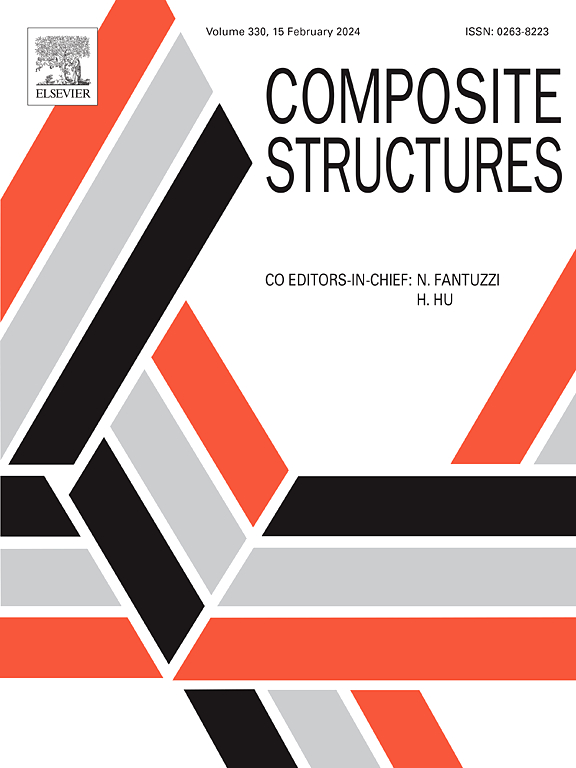Inverse design method of deployable cylindrical composite shells for solar sail structure
IF 6.3
2区 材料科学
Q1 MATERIALS SCIENCE, COMPOSITES
引用次数: 0
Abstract
The deployable cylindrical composite shell (DCCS) applied in the solar sail structure requires suitable geometric parameters to have high storage capacity and large sunlight area. However, it is difficult to obtain the suitable geometric parameters of DCCS. An inverse design method combining the advantages of radial basis function artificial neural network (RBFANN) and multi-island genetic algorithm (MIGA) is proposed to obtain the geometric parameters of DCCS in this paper. RBFANN has the ability of self-learning and nonlinear problem solving, MIGA has the ability of global optimization. The specimens of DCCS were manufactured based on the obtained geometric parameters. The coiling radius, driving characteristics of specimens were studied by experiment and finite element simulation, and the numerical results are in good agreement with the experimental results, which verify the effectiveness of the inverse design method. The inverse design method proposed in this paper can effectively obtain the geometric parameters of DCCS, which also can guide the design of solar sail structure.
用于太阳能帆结构的可展开圆柱形复合材料壳体的逆设计方法
应用于太阳帆结构中的可展开圆柱形复合材料壳体(DCCS)需要合适的几何参数,才能具有较高的存储容量和较大的日照面积。然而,要获得合适的 DCCS 几何参数十分困难。本文结合径向基函数人工神经网络(RBFANN)和多岛遗传算法(MIGA)的优点,提出了一种逆向设计方法来获取 DCCS 的几何参数。RBFANN 具有自学习和非线性问题求解能力,MIGA 具有全局优化能力。根据获得的几何参数制造了 DCCS 试样。通过实验和有限元仿真研究了试样的卷曲半径、驱动特性,数值结果与实验结果吻合良好,验证了逆设计方法的有效性。本文提出的逆向设计方法能有效获得 DCCS 的几何参数,也能指导太阳能帆板结构的设计。
本文章由计算机程序翻译,如有差异,请以英文原文为准。
求助全文
约1分钟内获得全文
求助全文
来源期刊

Composite Structures
工程技术-材料科学:复合
CiteScore
12.00
自引率
12.70%
发文量
1246
审稿时长
78 days
期刊介绍:
The past few decades have seen outstanding advances in the use of composite materials in structural applications. There can be little doubt that, within engineering circles, composites have revolutionised traditional design concepts and made possible an unparalleled range of new and exciting possibilities as viable materials for construction. Composite Structures, an International Journal, disseminates knowledge between users, manufacturers, designers and researchers involved in structures or structural components manufactured using composite materials.
The journal publishes papers which contribute to knowledge in the use of composite materials in engineering structures. Papers deal with design, research and development studies, experimental investigations, theoretical analysis and fabrication techniques relevant to the application of composites in load-bearing components for assemblies, ranging from individual components such as plates and shells to complete composite structures.
 求助内容:
求助内容: 应助结果提醒方式:
应助结果提醒方式:


